In anticipation of what would have been our founder William Morris' 187th birthday, Helen Elletson, curator at the William Morris Society, writes of his home in Hammersmith, London.
‘If I were asked to say what is at once the most important production of Art and the thing most to be longed for, I should answer, A beautiful House’. William Morris, 1892
In 1878 William Morris reported to his wife Janey that he had found one of the most beautiful houses in London when he rented Kelmscott House in Hammersmith, where he spent the last eighteen years of his life. Certainly, this 18th-century riverside house is one of the most significant of Morris’s homes. While living here he set up the Kelmscott Press, his textile production works at Merton Abbey, established the Hammersmith branch of the Socialist League in the Coach House, where speakers included George Bernard Shaw and W B Yeats, began carpet weaving and continued his innovating approach to design, printing and dyeing techniques.
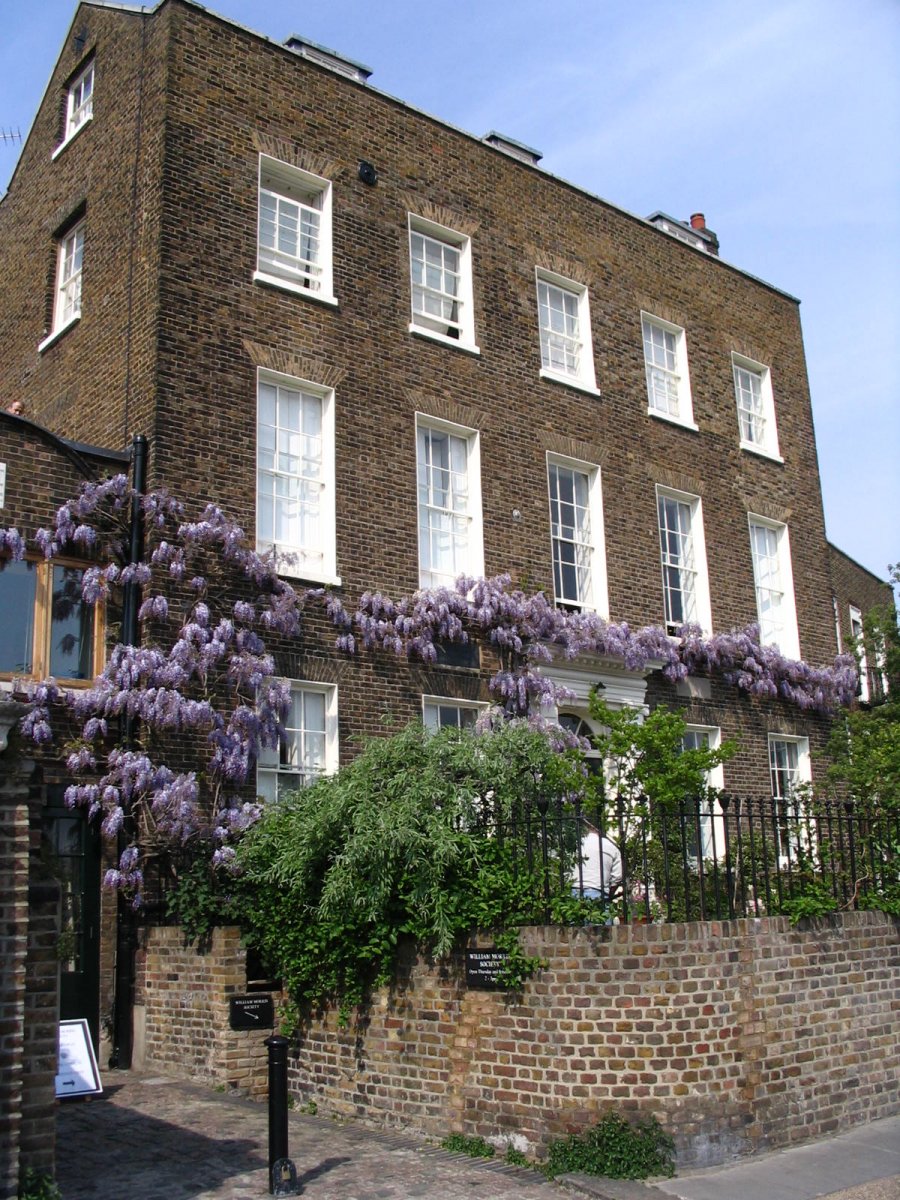
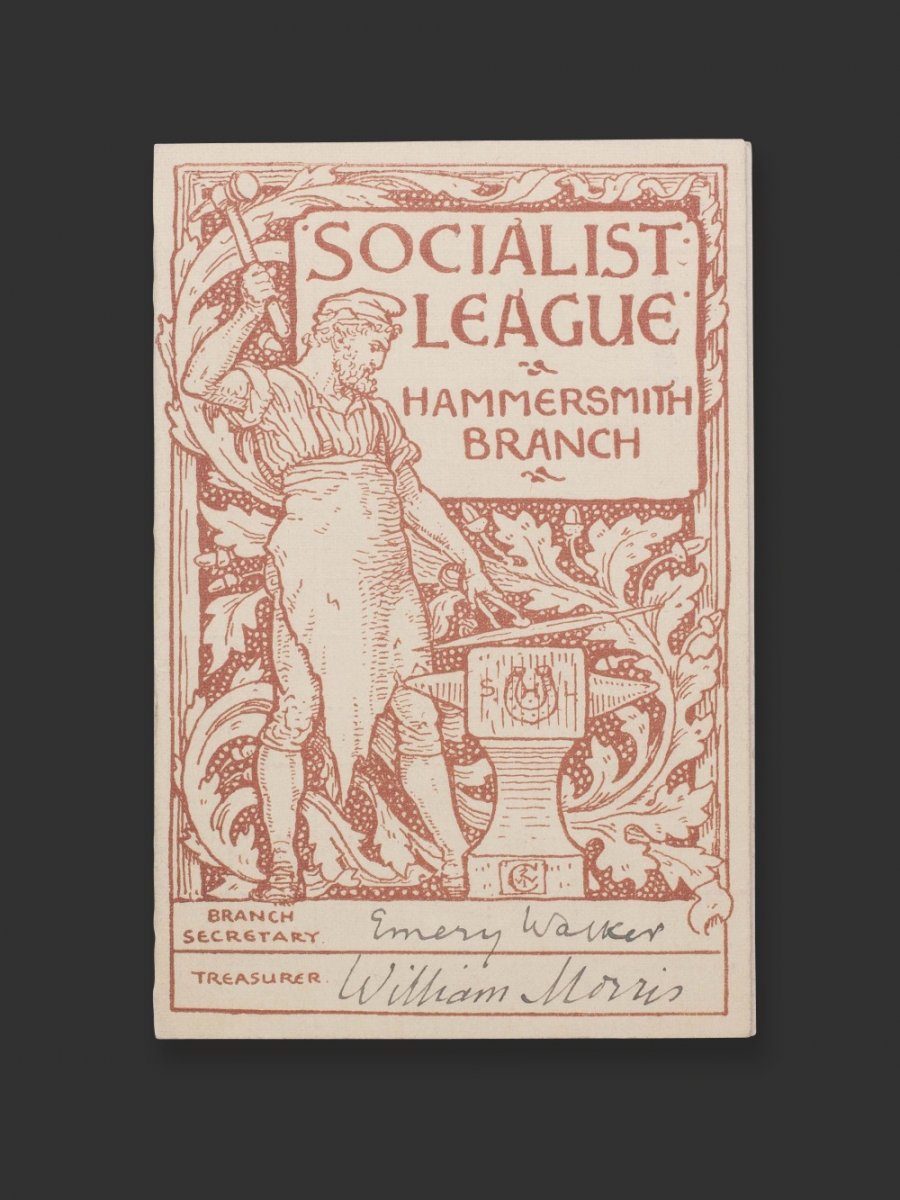
Kelmscott House in 2021; membership card designed by Walter Crane
Kelmscott House was described by Morris’s close friend, G.B. Shaw, as ‘magical’ and it was the location of great vision and artistic enterprise for Morris. Atmospheric photographs of the interior taken by Emery Walker, Morris’s great friend and near neighbour, faithfully convey the atmosphere of Kelmscott House, bursting with creative activity and providing a welcome for some of the most influential minds of the period.
The dining room of Kelmscott House was initially said to be ‘dismallish’ by Shaw but was transformed by Morris with his Pimpernel wallpaper and given a touch of the ‘Thousand and One Nights’ with an Eastern carpet spread like a canopy across the ceiling. May Morris later remembered that opposite the fireplace ‘stood the great Italian cypress-wood chest and thereon, with several pieces of oriental metalwork, a pair of lordly peacocks of carven brass with jeweled necks…’ Beside it stands one of the Sussex chairs manufactured by Morris, Marshall, Faulkner & Co. from 1874. This room epitomises the eclectic nature of the decoration of Kelmscott House, and perfectly demonstrates Morris’s golden rule, ‘have nothing in your houses that you do not know to be useful or believe to be beautiful’, written whilst living at his riverside home.
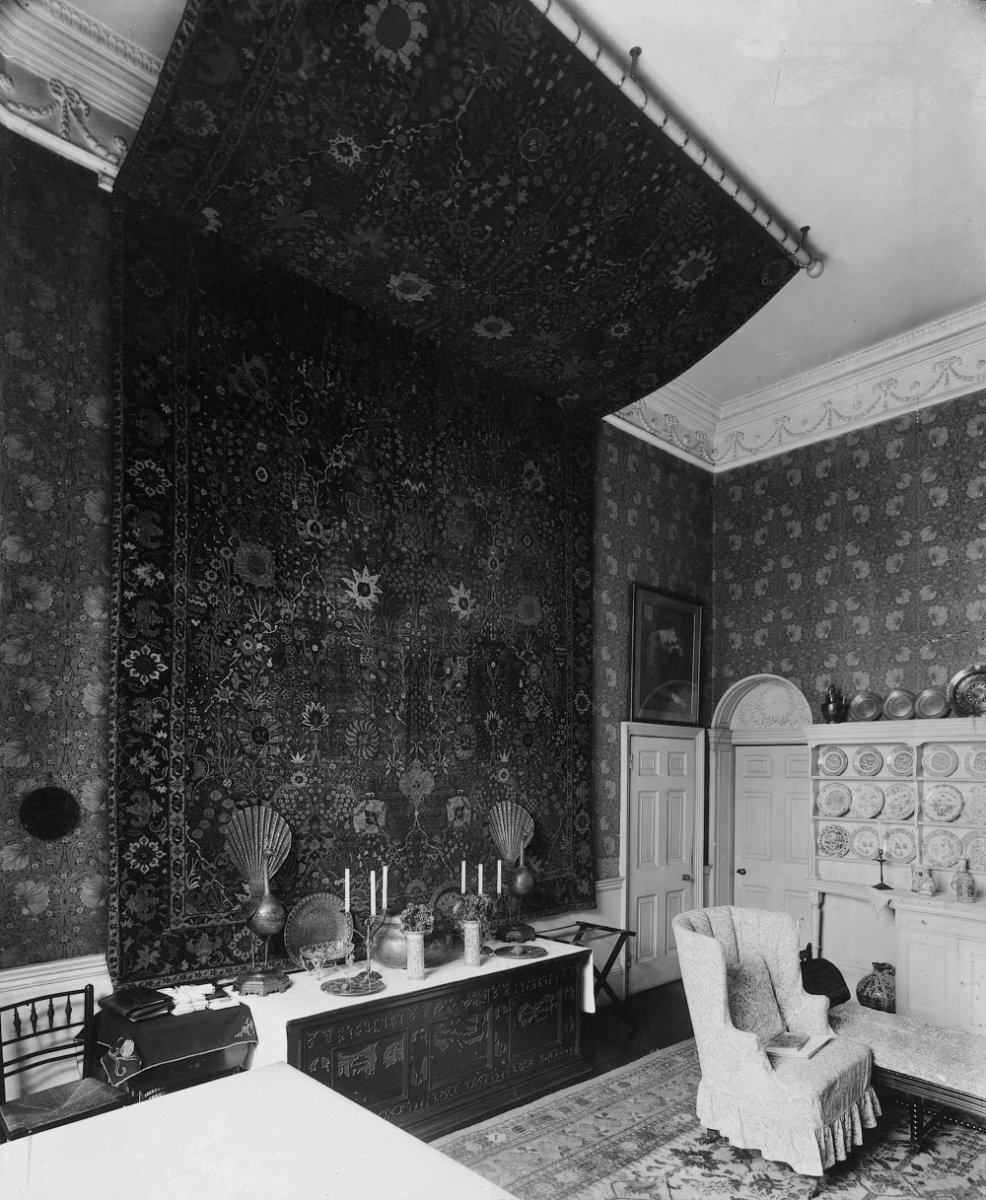
The dining room at Kelmscott House, taken by Emery Walker in 1896
Many well-known Morris & Co. designs are associated with the house; Morris designed the Bird woven wool textile especially to hang in the drawing room and Morris’s bedroom was papered in Trellis, a fragment of which still survives in situ. This was the first wallpaper designed by Morris – the birds were drawn by Philip Webb. Morris had a loom installed in the bedroom in order to begin experiments with weaving. The first tapestry he wove was Acanthus and Vine, which took 516 hours to complete. Once he had mastered the technique, looms were installed in the coach house and the beautiful Hammersmith carpets were woven. Even when away from the house, Morris longed to return to these practical crafts, writing to Georgiana Burne-Jones in 1879, ‘Lord bless us how nice it will be when I can get back to my little patterns and dyeing, and the dear warp and weft at Hammersmith’ Hammersmith’.
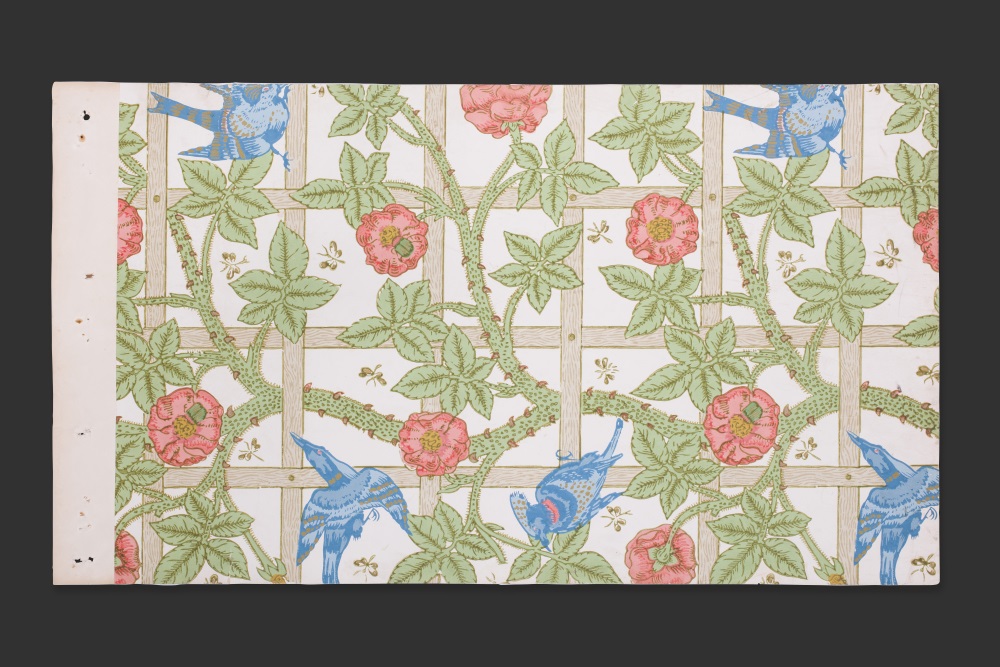
Morris & Co design for 'Trellis'
Morris died in his bedroom at Kelmscott House in 1896, aged 62, achieving the ambition he thought everyone should hold: ‘To enjoy good houses and good books in self-respect and decent comfort, seems to me the pleasurable end towards which all societies of human beings ought now to struggle’. Morris’s riverside home was central to his thoughts about artistic endeavour and the future development of society.
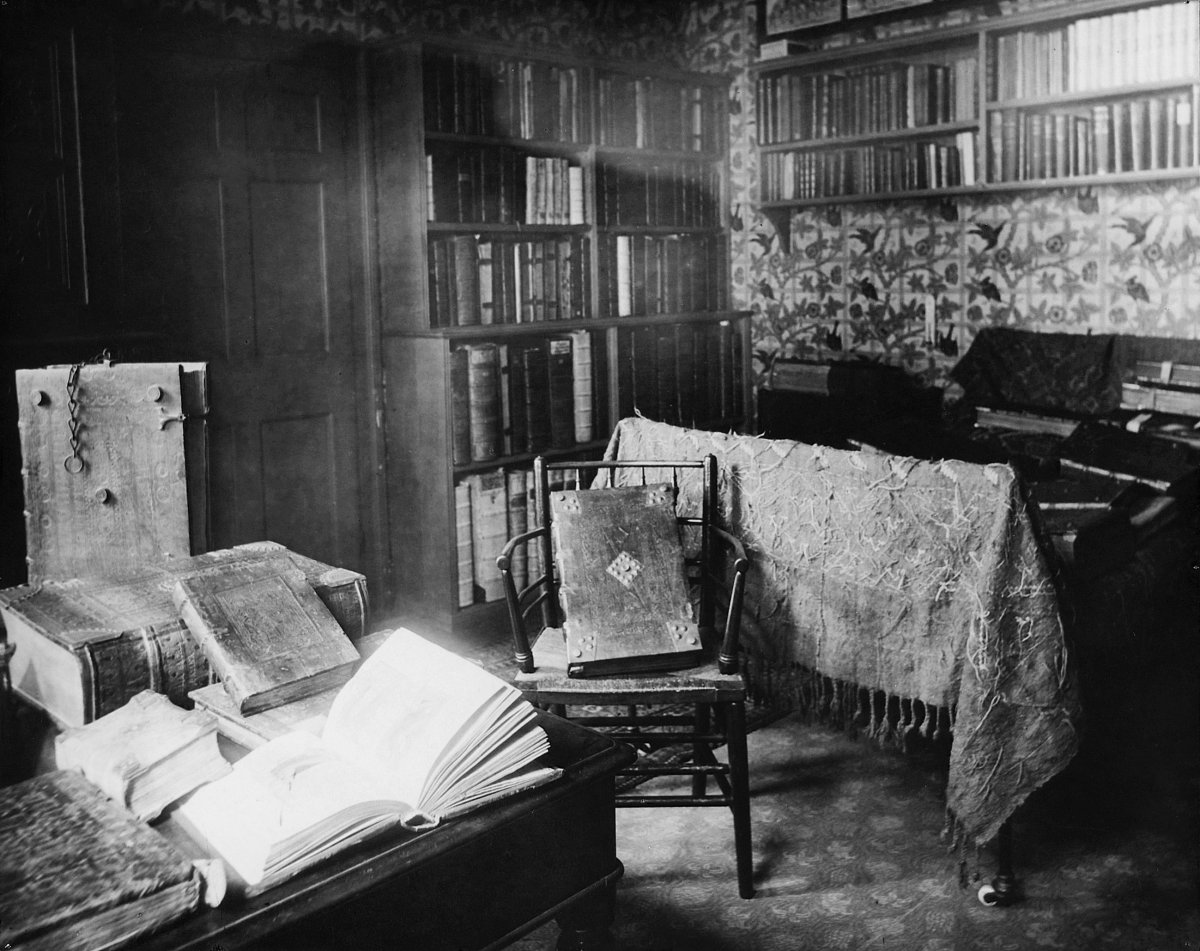
Morris' bedroom at Kelmscott House, taken by Emery Walker in 1896
Helen Elletson, Curator, Research and Development, William Morris Society. Find out more about Kelmscott House and the Society's work on their website.
All images credited to the William Morris Society with our thanks.
